Imperatives of Proactive and Decisive Risk Management
Dr. Olaniyi Opanuga, PhD, FNIPM
Imperatives of Proactive and Decisive Risk Management
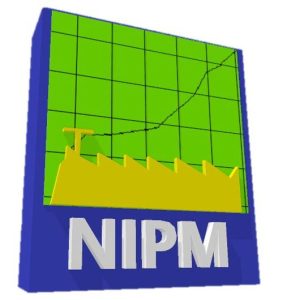
By
Dr. Olaniyi Opanuga, PhD, FNIPM
Faculty Lead, Nigerian Institute of Production Management- NIPM Nigeria

The Nigerian economy, like many other developing economies in Africa and around the world, operates in a complex and dynamic environment characterized by numerous risks and challenges. While Nigeria’s economy is one of the largest in Africa, it still lags behind other emerging markets in terms of economic development, infrastructure, and institutional capacity.
Compared to other African economies, such as South Africa, Egypt, and Morocco, Nigeria’s economy is more vulnerable to external shocks, commodity price fluctuations, and security threats. On a global scale, Nigeria’s economy is also exposed to risks associated with globalization, trade tensions, and technological disruptions, which can have a significant impact on its economic growth and stability.
In comparison to more developed economies, such as those in North America, Europe, and Asia, Nigeria’s economy faces unique challenges, including a heavy reliance on oil exports, inadequate infrastructure, and a fragile financial system. These challenges are common to many developing countries, which often face higher levels of risk due to factors such as weak institutions, inadequate regulatory frameworks, and limited access to capital and technology.
The risks faced by developing countries like Nigeria are higher due to several factors. Firstly, these countries often have limited economic diversification, making them more vulnerable to external shocks and commodity price fluctuations. Secondly, weak institutions and inadequate regulatory frameworks can lead to corruption, inefficiency, and a lack of transparency, which can increase the risk of business operations. Third, developing countries often have limited access to capital and technology, which can hinder their ability to invest in risk management and mitigation measures.
Finally, the lack of economic development and infrastructure can exacerbate the impact of natural disasters, conflicts, and other crises, making it more difficult for businesses to operate and recover.

THE IMPORTANCE OF RISK MANAGEMENT
Risk management is a systematic approach to identifying, assessing, and mitigating potential risks that could impact an organization’s operations, finances, and reputation.
Effective risk management enables companies to minimize losses, maximize opportunities, and ensure business continuity. In certain industrial sectors where risks are hugely inherent and potentially catastrophic, proactive risk management is crucial for ensuring operational excellence and maintaining stakeholder trust.

ISO 31000:2018
To ensure effective risk management, organizations should adopt the ISO 31000:2018 standard, which provides a globally recognized framework for risk management. This standard provides guidelines for identifying, assessing, and mitigating risks, as well as for monitoring and reviewing risk management processes. By adopting ISO 31000:2018, with NIPM Training organizations can ensure that their risk management practices are aligned with international best practices and that they are well-equipped to manage risks in a proactive and decisive manner.
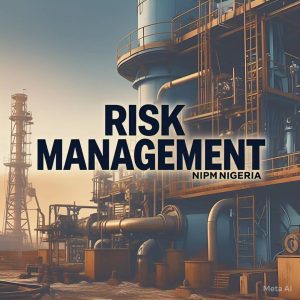
■ PROACTIVE RISK MANAGEMENT
Proactive risk management involves anticipating and mitigating potential risks before they occur. This approach requires a thorough understanding of the organization’s operations, industry trends, and regulatory requirements. By identifying potential risks early, companies can take decisive action to prevent or minimize their impact. Proactive risk management involves:
- Risk identification: Identifying potential risks through thorough analysis and assessment of the organization’s operations, industry trends, and regulatory requirements.
- Risk assessment: Assessing the likelihood and potential impact of identified risks to prioritize mitigation efforts.
- Risk mitigation: Implementing measures to prevent or minimize the impact of identified risks.
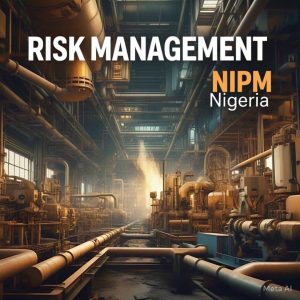
■ DECISIVE RISK MANAGEMENT
Decisive risk management involves taking swift and effective action to address identified risks. This approach requires a culture of risk awareness and a clear understanding of the organization’s risk tolerance. Decisive risk management involves:
- Clear communication: Communicating risk information to stakeholders in a clear and timely manner.
- Swift decision-making: Making informed decisions quickly to address identified risks.
- Effective implementation: Implementing risk mitigation measures effectively and efficiently.
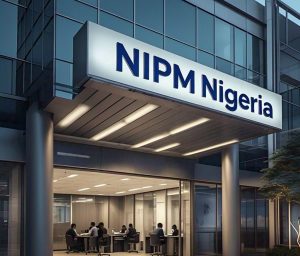
■ By adopting ISO 31000:2018 alongside NIPM Nigeria Training, organizations will:
– Enhance risk management practices: Align their risk management processes with international best practices and standards.
– Improve risk identification and assessment: Identify and assess risks more effectively, prioritizing mitigation efforts and minimizing potential impacts.
– Develop a proactive risk management culture: Foster a culture of risk awareness and proactive risk management, enabling organizations to respond swiftly and effectively to emerging risks.
– Ensure business continuity: Maintain operations and minimize disruptions in the event of a risk occurrence, ensuring business continuity and minimizing losses.
– Enhance stakeholder trust: Demonstrate a commitment to risk management and maintain stakeholder trust, enhancing reputation and credibility.
– Stay ahead of regulatory requirements: Stay up-to-date with regulatory requirements and industry standards, ensuring compliance and minimizing regulatory risks.

NIPM EXPERT FACULTY AND INDUSTRY BEST PRACTICES
We emphasize KNOW-HOW and WORLD-CLASS BENCHMARKING.
At the Nigerian Institute of Production Management- NIPM Nigeria, our expert faculty adopts real-life cases and industry best practices-centred andragogy to ensure that participants are equipped with the knowledge and skills necessary to manage risks effectively. Our faculty members are experienced professionals with extensive expertise in risk management and industry-specific knowledge. They use a variety of teaching methods, including case studies, group discussions, and simulations, to ensure that participants are engaged and motivated to learn.

BENEFITS OF PROACTIVE AND DECISIVE RISK MANAGEMENT
The benefits of proactive and decisive risk management are numerous. By adopting this approach, companies can:
- Minimize losses: Reduce the likelihood and impact of potential risks.
- Maximize opportunities: Identify and capitalize on opportunities that may arise from taking calculated risks.
- Ensure business continuity: Maintain operations and minimize disruptions in the event of a risk occurrence.
- Enhance reputation: Demonstrate a commitment to risk management and maintain stakeholder trust.

BEST PRACTICES
To implement proactive and decisive risk management, companies should:
- Establish a risk management framework: Develop a comprehensive risk management framework that outlines policies, procedures, and responsibilities.
- Conduct regular risk assessments: Regularly assess potential risks and update the risk management plan accordingly.
- Foster a culture of risk awareness: Encourage a culture of risk awareness and empower employees to identify and report potential risks.
- Monitor and review: Continuously monitor and review the risk management plan to ensure its effectiveness.
CONCLUSION
In conclusion, proactive and decisive risk management is essential for organizational success in today’s fast-paced and ever-changing business environment. By adopting this approach, companies can minimize losses, maximize opportunities, and ensure business continuity.
As an internationally certified management and leadership consultant, people and process management trainer and a seasoned expert in production, supply chain and operations management with working experience in public service, diverse economic and industrial sectors, I recommend that companies intensify training and re-training, establish a comprehensive risk management framework backed by top management commitment and total employee involvement, conduct regular risk assessments using the right methodology and tools, foster a culture of risk awareness, and continuously monitor and review their risk management plan.
By doing so, companies can ensure proactive and decisive risk management and achieve operational excellence.
For Training & Membership
The Registrar
Nigeria Institute of Production Management
Acme House, 23, Acme Road,
Ogba Industrial Estate,
P.O. Box 7798, Ikeja, Lagos, Nigeria
Tel: 08023140750
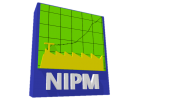
Leave a Reply